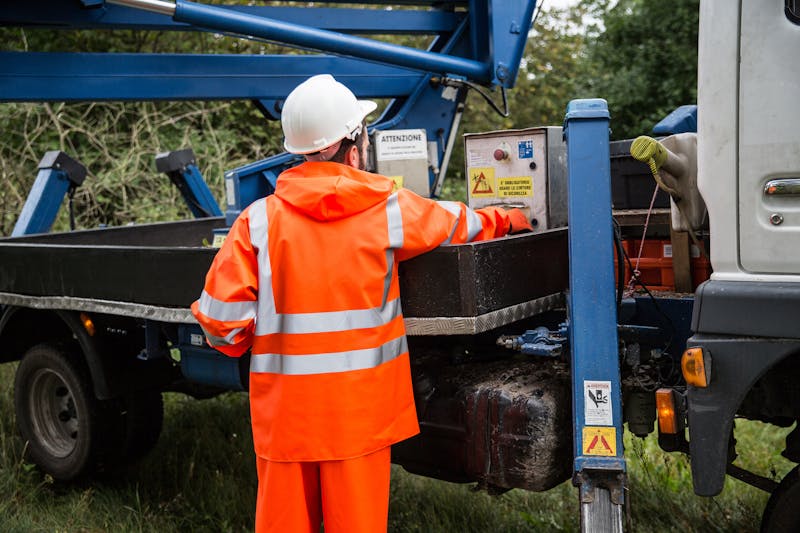It’s 2 a.m. in the San Fernando Valley. Moonlight spills over the steel bones of a half-built apartment complex as a security guard sweeps his flashlight across the site. Suddenly, his radio crackles: “Motion sensor tripped near the equipment yard.” He sprints toward the alert, heart pounding, and finds shadowy figures loading copper wiring into a pickup. Instead of charging in, he triggers a silent alarm and floods the area with blinding lights. The thieves scatter, leaving their loot behind. “Happens weekly,” the guard says later, wiping sweat from his brow. “But we’re always ready.”
Los Angeles County’s construction boom—a frenzy of cranes and cement mixers—has become a magnet for chaos. Theft, vandalism, and squatters plague sites daily, turning progress into a high-stakes gamble. With construction site thefts surging by 34% since 2023 and vagrancy-related damage costing millions, builders face a crisis that threatens deadlines, budgets, and safety. Here’s how the chaos unfolded—and how innovative security strategies are rewriting the rules of survival.
The Crisis: When Growth Invites Chaos
1. Theft Epidemic
Copper wiring, solar panels, and HVAC units vanish like ghosts in the night. A single raid can strip $50k–$200k in materials, delaying projects for weeks. Thieves operate like pros—using drones to scout sites and reselling goods through underground networks that stretch across state lines.
2. Vagrancy’s Toll
Unfinished sites become makeshift shelters, leading to fires, graffiti, and structural damage. In North Hollywood, a squatter’s campfire ignited a blaze that torched $1.2M in lumber. “We found needles, trash, even a goat once,” a contractor mutters. “You can’t make this up.”
3. Liability Landmines
Injured trespassers or workers exposed to asbestos and lead have sparked lawsuits, with insurers hiking premiums by 40% for sites lacking protection. “One lawsuit can bankrupt a small developer,” warns a risk assessor in Boyle Heights.
Why Locks and Cameras Aren’t Enough
Police are stretched thin—LAPD’s average response time for non-violent crimes is 45 minutes, leaving sites defenseless. Chain-link fences? “They slice through ’em like birthday ribbon,” scoffs a site manager. Basic cameras? Thieves yank them down or disguise themselves in hoodies.
The New Guardians: Security Firms Step Up
Specialized security service providers are flipping the script, blending tech, training, and grit to outsmart thieves and de-escalate crises:
1. Tech as a Force Multiplier
- Thermal Drones: Patrol vast sites at night, spotting body heat in hidden corners.
- AI Surveillance: Cameras flag loiterers or unfamiliar trucks, pinging guards’ phones in real time.
- GPS Trackers: Hidden tags on equipment scream alerts if moved beyond the site’s invisible fence.
2. Human Ingenuity
- Conflict Whisperers: Guards trained in de-escalation talk down confrontations, often connecting homeless individuals to outreach programs instead of cops.
- Red Team Drills: Mock thieves test site weaknesses. One firm slashed thefts by 62% after guards posed as criminals to expose gaps.
3. Regulatory Shields
Guards enforce hazardous material lockdowns and OSHA protocols, preventing spills and lawsuits. After a toxic leak in Commerce, a team contained the mess, dodging six-figure fines.
Case Study: The Glendale Turnaround
A mixed-use development in Glendale bled $500k from nightly raids. Desperate, they rolled the dice on a new approach:
- Round-the-Clock Patrols: Armed teams deterred theft rings.
- Biometric Checks: Only vetted workers entered.
- Compassionate Outreach: Guards partnered with NGOs to relocate encampments without clashes.
Result? Zero incidents in 90 days—and insurers slashed premiums by 22%.
Building a Fortress: A Survival Guide
- Layer Defenses Like Lasagna
- Priority 1: Guards with crisis training, day and night.
- Priority 2: Motion lights that blind intruders, panic buttons tied to radios.
- Priority 3: Blockchain-tracked inventory logs—because paper burns.
- Fight for Policy Muscle
While task forces target retail theft, construction sites need similar heat. Advocates push laws requiring security plans for projects over $5M. - Community First, Always
Guards trained in social work mediate disputes and build trust. In Long Beach, a “Safety for All” program paired patrols with homeless outreach, cutting vandalism by 48%.
The Math of Survival
A guard’s $30/hour wage is peanuts next to a single theft’s toll. For developers, investing in tech-savvy security isn’t optional—it’s the difference between breaking ground and breaking down.
Conclusion: The Guardians LA Needs
LA’s skyline tells a story of ambition, but its future hinges on those who stand watch in the shadows. As the guard surveys his quiet site, he radios his team: “All clear.” For now, the balance holds—not through brute force, but through brains, heart, and relentless preparation. Because in a city where progress and peril share the same zip code, security isn’t an expense. It’s the bedrock every dream is built on.
For builders seeking solutions, many security firms now offer free risk assessments and AI-driven patrol plans—because sometimes, the best defense is a partner who’s already seen the storm.





